The Original Ricoh GR Digital Camera (2023)
01st March 2023
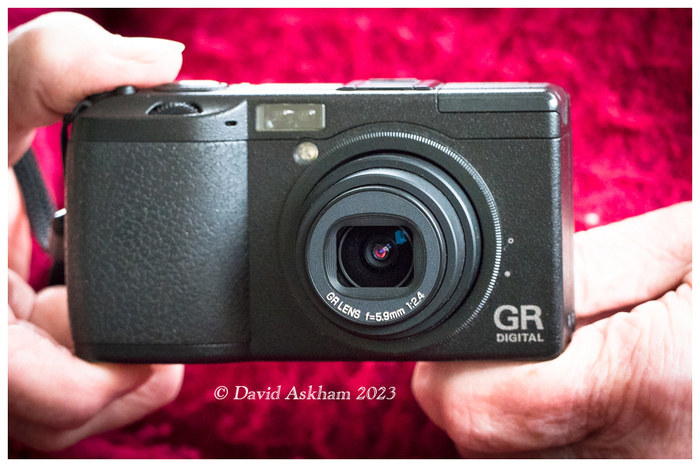
(Rediscovery of the original GR Digital camera, which I bought new in 2007, untouched for well over a decade, brought back many happy and largely forgotten memories)
Delving into the depths of my digital archive, brought to light a lot of largely forgotten images, a few taken with the pioneering Ricoh GR Digital camera, (referred to hereafter as GRD) which I bought in 2007. A little more searching unearthed the original box with instructions and charger etc. But no camera, until much later when it appeared not in the case I was expecting. A museum piece?

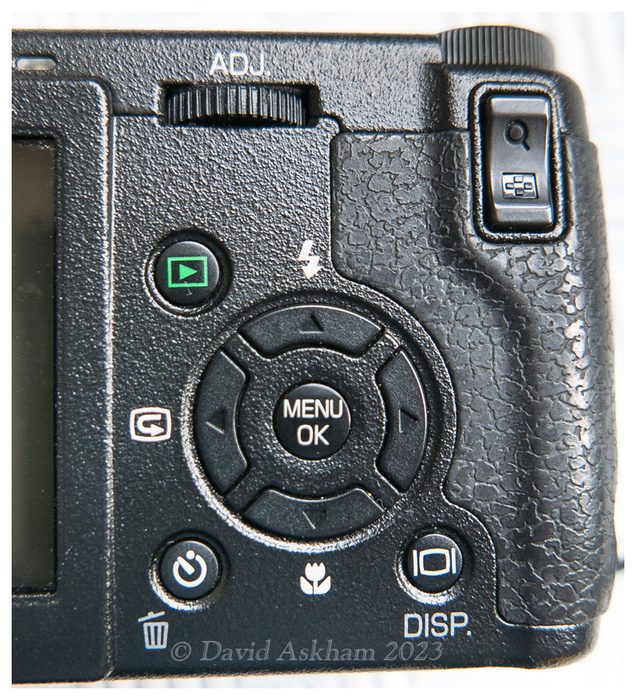
(Together with controls on the top plate and those you see here, the camera can be controlled entirely by your right hand).
The box bore three interesting labels which revealed the technical accomplishments that this little camera had achieved. First was the TIPA 2006 award for the Best Prestige Camera. (Technical Image Press Association). Second, it was awarded a Special prize by the Camera Press Club in 2006; and finally, it won the Product Design Award by an organization bearing the symbol iF. These were relatively early days of digital photography. Yet, derivatives of this camera, are still made today, in 2023, namely the models GR III and GR III X, although they are now equipped with a bigger APS-C sensors. In between, there were a few fitted with fixed zoom lenses, although the later models have an excellent fixed prime lens. But the little GRD somehow survived.
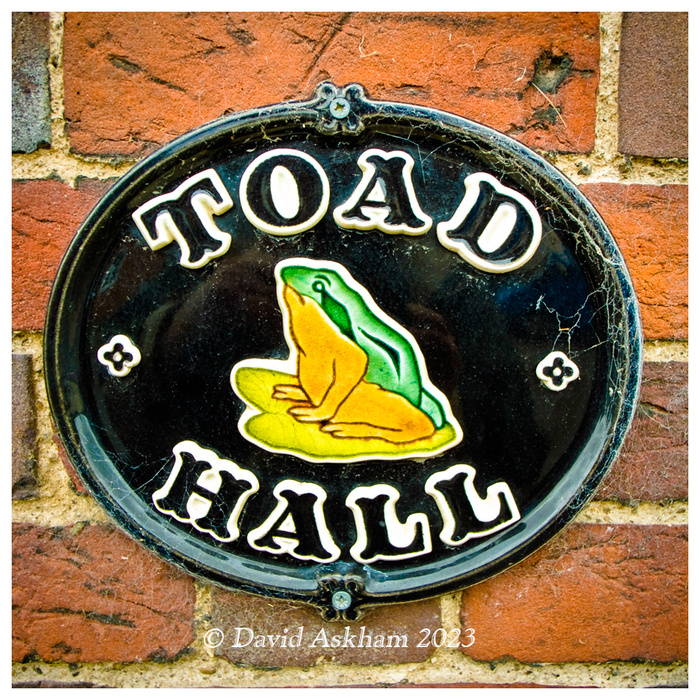
(The tiny Ricoh was very useful for gathering visual information, such as this village house sign).
During my picture library research, I discovered a legacy of several hundreds retained images, of which at least sixteen had been published, worldwide, through a picture library. The image quality was certainly not found wanting, commercially. But by 2009, new competition had appeared. Images from my new Leica X1 and M8 clearly were superior, leading to the retirement of my GRD for serious work. The brand was sidelined by me, until now, when my increased expertise in digital processing would be applied to this early camera.
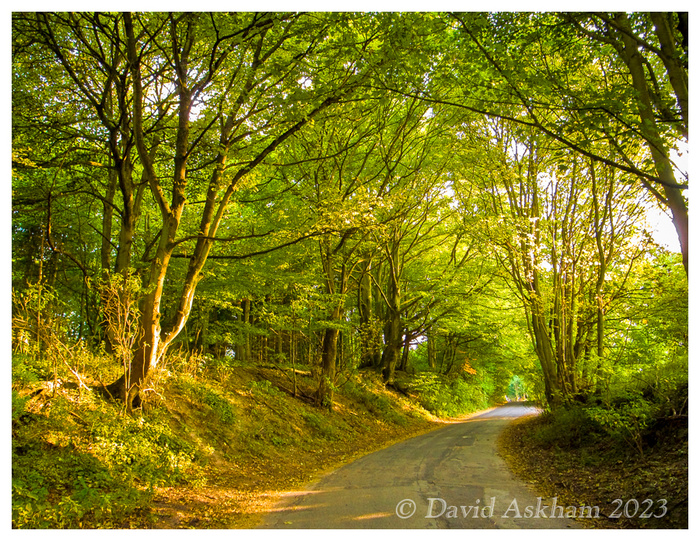
(A Wiltshire lane revealed by the wide-angle lens)
Specification
The light magnesium alloy body of the GRD is diminutive, making it a superior and pocketable little camera, like no other digicam of its time. Smartphones had yet to be invented. The GRD possessed a modest 8.1 MP CCD sensor, but can capture RAW files, as an alternative to JPEGS in two levels of compression, to meet the limitations of expensive, but low-capacity memory cards. (The GRD is limited to 2 GB cards, which are difficult to find nowadays) How times have changed. However, it lacked an inbuilt viewfinder, relying on a fixed LCD monitor on the back of the camera. There was a hot-shoe for attaching a small viewfinder, or more powerful flash, although it already has a tiny inbuilt electronic flash unit, which is missing from later models.
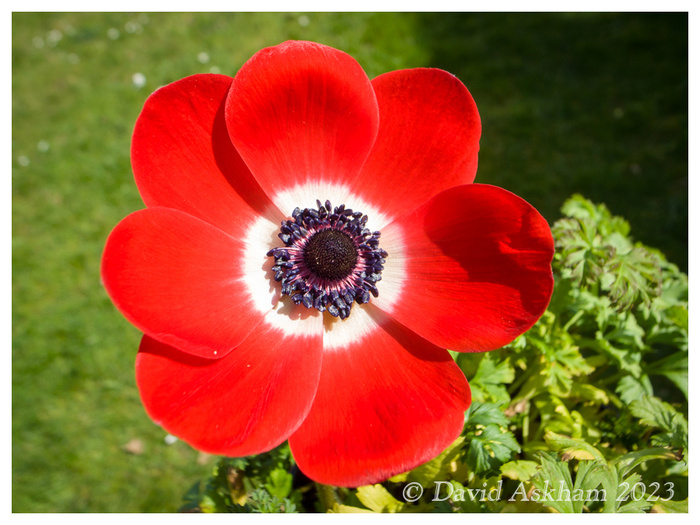
(The Ricoh GR cameras are excellent for close range pictures, such as this anemone flower head)

(Amusing sign spotted in the rear window of a van, during a shopping trip)
The camera has an excellent fixed 5.9 mm (28 mm equivalent) GR lens, with a maximum aperture of f/2.4, which performs impeccably. The camera proved to be enduringly popular with street and travel photographers, by virtue of its small size, low weight (less than 200 grams), silent operation and exceptional results. Furthermore, it is inconspicuous.

(A line of empty supermarket trolleys awaiting customers)
Searching the internet, I discovered that the original model described in this article, is much sought after, nowadays, for its ‘film-like’ treatment of pictures it produces. In addition, users like its rendering of black and white photographs. So it appeals to those seeking to portray the modern world like ‘yesteryear’, where its propensity for showing noise at its higher ISO settings, passes convincingly for ‘grain’. Until its resurrection in my hands this year, I had rarely used the camera in this way. So, the question arose, is the original GRD still usable today? Let’s find out.
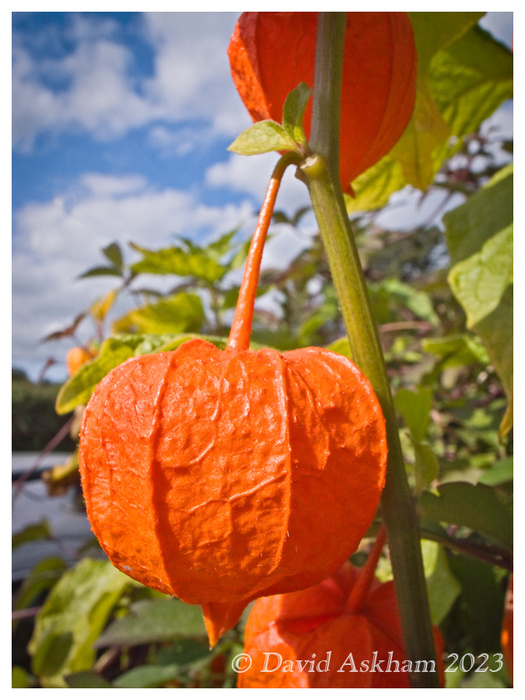
(‘Chinese lanterns’ make excellent dried flowers for the dark winter months)
Still viable today?
Batteries, neglected for more than ten years, were put on charge. Much to my relief and pleasure, they did recharge and powered the camera, although they do need replacing, which I have now done. Since writing Raw files to memory takes a relatively long time (up to ten seconds), I could not envisage using it that way, today. So I reset the camera to produce top quality JPEG in normal black and white. Being already winter, I set the ISO to 400, and set out to see what I could find.
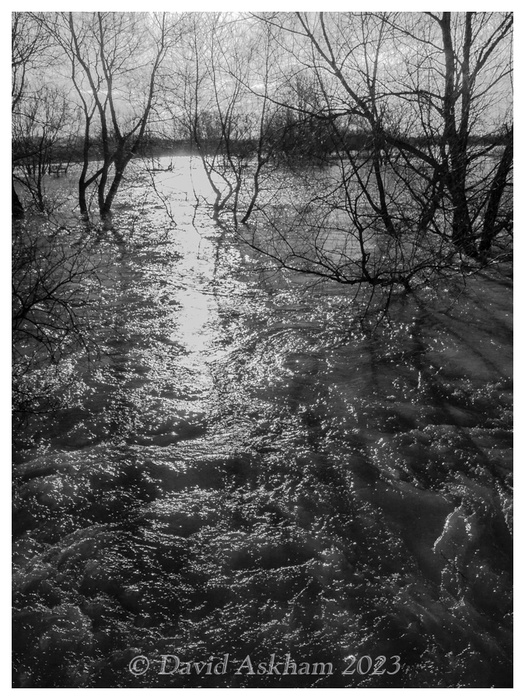
(Swirling flood waters in a Wiltshire village captured convincingly by the little Ricoh GR camera)
Surprisingly, I did not miss having any form of viewfinder. I put this down to its slender size and ease of composing on the rear monitor. Compositions form in the mind and are confirmed in the preview. Unlike a rangefinder camera, there was no compulsion to raise the camera to eye-level. It was so easy to place the camera at differing heights, away from the face. I believe this is the reason the little Ricoh is so popular with street photographers, who are quickly disregarded by passers-by. As to my flirtation with monochrome photography, I became quite enthusiastic, helped by generally indifferent weather conditions. My enjoyment is ongoing, reflected in the images shown here. I have also included some of my earlier work.

(Timber in the wood shed waiting to become recycled fuel for winter)
I quickly appreciated the GRD’s fine ergonomic features and easy handling, despite its small size. It is my only camera which I can operate comfortably with one hand. I missed the ability to store my personal settings conveniently, a feature which soon appeared in later Ricoh models. But that did not prevent my obtaining remarkably satisfying results. In fact, very soon I was watching YouTube videos extolling the virtues of later and current models. One video, showed a challenge in London and revealed spectacular A2 size printed results. Here is the link: (https://youtu.be/fEBdnAlVypM)
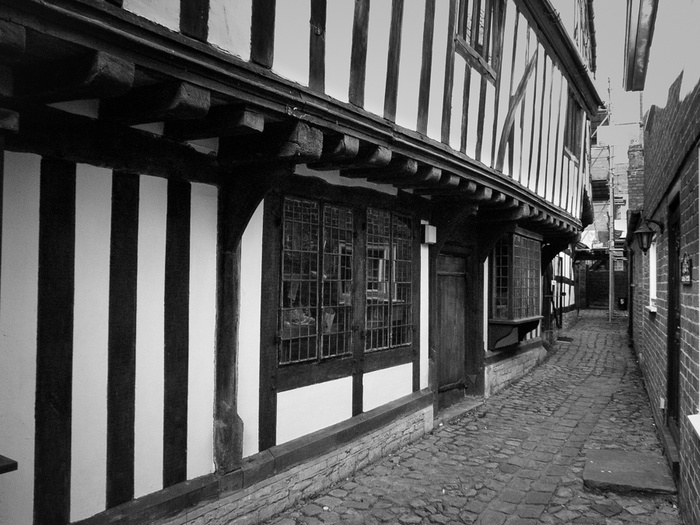
(In a Devizes alley can be found some of the oldest buildings in Wiltshire)
Will I be upgrading my GRD? Well, I have to confess that my reunion with my old original GRD, together with my noting the consistent technical advances made by Ricoh during the ensuing interval, have tempted me to buy the most recent model. There are two versions of the GR III. I decided to buy the later Ricoh IIIX, a new derivative model which has the more useful focal-length of 40 mm (equivalent). Since writing my original article for Macfilos, published last month, I now have done so, and I am enjoying exploring its greatly increased capabilities. I will write another article describing my experiences with it. Meanwhile, the original model, the GR Digital, is enjoying a new lease of life, making monochrome pictures for me. Its 28 mm lens nicely complements the longer focal length of 40 mm.
***E N D***
Copyright © David Askham, 2023
Comments
 By Ko.Fe.: I have it as well. And GRD III, which is almost up to date camera. Took GRDIII on intercontinental trip this winder as only camera and no regrets. Three weeks of daily use and only one and half battery.
By Ko.Fe.: I have it as well. And GRD III, which is almost up to date camera. Took GRDIII on intercontinental trip this winder as only camera and no regrets. Three weeks of daily use and only one and half battery. By David Askham: Thank you Ko.Fe. for your comment. That was a brave decision. However, was it? Most people would settle for their smartphone cameras. Given the choice, the little Ricoh would give me more confidence as a companion on an intercontinental trip.
By David Askham: Thank you Ko.Fe. for your comment. That was a brave decision. However, was it? Most people would settle for their smartphone cameras. Given the choice, the little Ricoh would give me more confidence as a companion on an intercontinental trip.